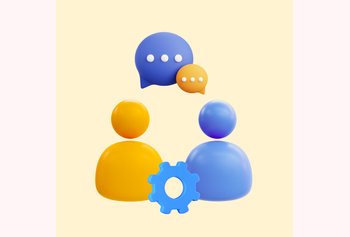How to Set Challenging Yet Achievable Customer Service Goals

Table of contents
Setting actionable customer service goals can be a game-changer. These goals guide your customer support agents who’d, otherwise, end up throwing darts in the dark.
In fact, the right customer service goals can fast-track your success by improving employee productivity, making your customers happy, and encouraging repeat business. So that’s a win-win-win.
The only catch: goal-setting is never easy. It takes a lot of trial and error, especially, as you dabble into setting KPIs and metrics that track each goal’s progress.
To help you navigate this tricky territory, we’ve put together this comprehensive guide on how to set customer service goals.
You’ll learn how to set SMART goals, some real-life examples of customer service objectives, and a list of 9 widely important goals for customer service.
Let’s dive in:
Table of Contents
- Set SMART goals
- The most important customer service objectives (real-life examples)
- Nine challenging (yet achievable) customer service goals
- Ready to set actionable goals for your team?
- FAQs on Setting Customer Service Goals
Set SMART goals
SMART goals are actionable goals since they are Specific, Measurable, Achievable, Relevant, and Time-bound.
Here are the various aspects of SMART goals:
🎯 Specific: This addresses the ‘what’ of your goal. Asking your team to create educational resources for your customers isn’t accurate, for example. However, spelling out the resources – an FAQ section let’s say – makes your goal specific.
🎯 Measurable: This ensures you set goals that can be tracked. Without it, you might as well be running a race with no finish line in sight.
🎯 Achievable: Ensure your goal is realistic so that your team can achieve it. For instance, asking your team to respond to all customer queries in real-time isn’t realistic, particularly, if you get a lot of queries. In contrast, setting a 1-hour response time can make the goal attainable.
🎯 Relevant: Relevance keeps your goals looking fresh and, well, relevant. For example, setting a goal to create new tutorials to explain how to use your product features is a relevant goal for an objective such as educating customers. So ask yourself: do my goals align with my customer service objectives? If they don’t, you’ll want to revisit the drawing board.
🎯 Time-bound: Lastly, put a time cap on your goals to ensure you give your team ample time to meet them.
Without addressing each aspect of a SMART goal, you’re more likely to find your team lagging at accomplishing their goals. You’ll also have a hard time understanding their performance (let alone progress).
The most important customer service objectives (real-life examples)
Want a fresh look at customer service objectives? Take some inspiration from the following objectives that some of the most successful businesses out there pursue:
Increase customer happiness

The team at Visme has its sight trained on customer happiness. “Whether through the level of support, guidance on using a certain feature or alleviating a pain point, the end result needs to be customer happiness,” shares their Founder, Payman Taei.
Drive profit home

“Everything you do should be to drive profit to your business, and customer service is no different,” notes Mark Webster, the Co-Founder of Authority Hacker. Webster shares that seeing customer service as a sales and marketing opportunity can make things exciting besides growing your profit. To this end, their team strives to reduce refunds and improve the churn rate.
Offer quick and quality support

The SEMrush team aims to deliver “fast and high-quality support and provide answers to all arising questions,” says Head of Global Marketing, Olga Andrienko.
To meet this objective, the team offers several resources such as the “SEMrush Blog, SEMrush Academy, Global Marketing Day conference, webinars, [and] ebooks.”

The folks at Nozzle aim for the same: “Providing a quick and accurate response to technical questions, bugs or anything that is hindering customers from getting the data they need,” highlights Boyd Norwood, the VP of Marketing.
Nine challenging (yet achievable) customer service goals
Well-planned customer service goals chalk out the path to high customer loyalty. Equally important is the fact that these goals give support reps a direction to improve their performance, which boosts their work satisfaction.
If you aren’t sure what goals to set for your team, read on to find some useful examples of customer service goals to get an idea of how to set your own goals.
With each goal, we’ve also shared tips on how to put it into action and how to make it measurable by adding relevant metrics to track.
Let’s kick it off:
1. Set a target response time
88% of customers expect a response to their query within 60 minutes. A whopping 30% also expect you to get back to them within 15 minutes or less. To meet these expectations, draft a target response time.
Visme’s Payman is of the same mind.
“We do like to set an average response time where a customer is replied to in a short period of time.” However, some queries might need an elaborate response. In that case, it helps to give “an initial (human) reply so that the customer feels a positive vibe.”
Payman Teri
Looking for an idea of how fast teams aim to respond? Here’s SEMrush’s target response time, “the goal is to provide answers within a 2-hours frame for email queries and within 30 seconds if the question is asked in chat,” highlights Andrienko.
Moving forward, take the following steps to decrease response time:
- Prioritize responding to emails by filtering and organizing your inbox. Some words you can use to filter emails include ‘urgent,’ ‘late delivery,’ and ‘damaged product,’ among others.
- Automate assigning queries to the right teammates. For example, if an email includes words like ‘payment,’ ‘refund,’ it’d automatically go to a finance representative (Psst! Hiver – a Gmail-based customer service software can help with automating emails)
- Create written/email templates for responding to common customer queries.

On a side note, if you’re struggling to write awesome customer service emails, we’ve got a guide right here to help you through it.
Metrics for success:
Measure your team’s First Response Time (FRT, the time between a customer’s first query and a support representative’s first response) and Average Resolution Time or the total time it takes a representative to solve a query.
Hiver’s latest survey of customer service professionals found that close to 40% of support teams have a First Response Time of less than 60 minutes for email queries. Around 50% of teams promise to resolve customer queries in under 6 hours.
2. Improve the quality of your responses

While cutting back on your response time is a good target, it’s incomplete without setting the goal of improving the quality of your responses. Because what good is a quick, canned response that only partly solves the customer’s problem and requires them to exchange numerous emails before getting their answer?
That said, good quality is subjective. Lucky for you, the SEMrush team shares three focus areas for improving quality that you can strive for too:
- Accuracy: the answer should be succinct: apart from answering the initial question, make sure to foresee some possible related questions.
- Verification: all the information provided to a user should be verified internally – with [the] education team or through the knowledge base.
- Format: the answer of the specialist should be structured and professional.
Metrics for success:
Pay attention to your Average Resolution Rate, Issue Resolution Rate (the average number of issues your staff solves),and Number of Interactions per Case (the back forth of messages to get an issue resolved).
3. Prioritize response channels
Customers expect quick responses to their queries. That’s a given. Over half of them also say they appreciate companies the most for valuing their time.
Omnichannel presence to solve customer queries is a must. But, being available on multiple channels at all times takes a lot of time and effort. So it’s wise to prioritize your response channels.
To do so:
- Understand where your customers send the most queries, then prioritize those channels to reduce response time and improve the quality of the response.
Metrics for success:
Track Preferred Communication Channel to dig out the volume of customer queries on various channels.
4. Reduce churn rate
Churn rate is the percentage of users who stop using a service or product after a set time. Since customer retention is way more cost-efficient than getting new ones, working on your retention rate is essential.
Some useful tips to help you meet this goal include:
- Appreciate your customers. Be it a shout out that they give you on social or an email thanking your service, always take the time to appreciate them.
- Keep in touch with your customers. For instance, by sharing tips to better use your product and case studies of how others are using it. Mention did the same and improved their nosediving churn by 22% in a month.
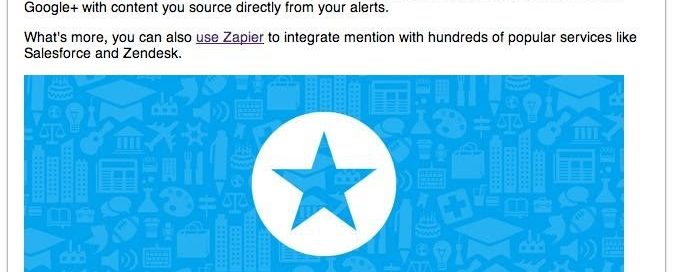
- Offer incentives to long-term customers. For example: offer discounts on upgrades or a free month of service.
Metrics for success:
Keep an eye out on your Customer Churn so you can plan remedial steps accordingly.
If you’re looking to improve your churn rate right away, here’s an in-depth guide to give you a headstart.
5. Improve customer onboarding process
Turning prospects into paying customers is only half the victory. The other half, you ask? Training them to use your product or service efficiently, which brings us to effective customer onboarding.
Fail here and you can be sure that your customer is not likely to continue using your service.
Take it from me – someone who takes her time in understanding how to use a tool. But, if the onboarding process isn’t smooth or clear enough to teach me how to use the product, I’m quick to take a U-turn.
Therefore, improving your customer onboarding process is a good idea. To begin with, consider the following ideas:
- Based on your customer interactions, note where they get stuck while using your product. Make a list of ways to improve your product’s UX and pass it on to the UI team.
- Prepare an onboarding checklist and encourage customers to complete it by providing them with an incentive such as products with your logo on them.
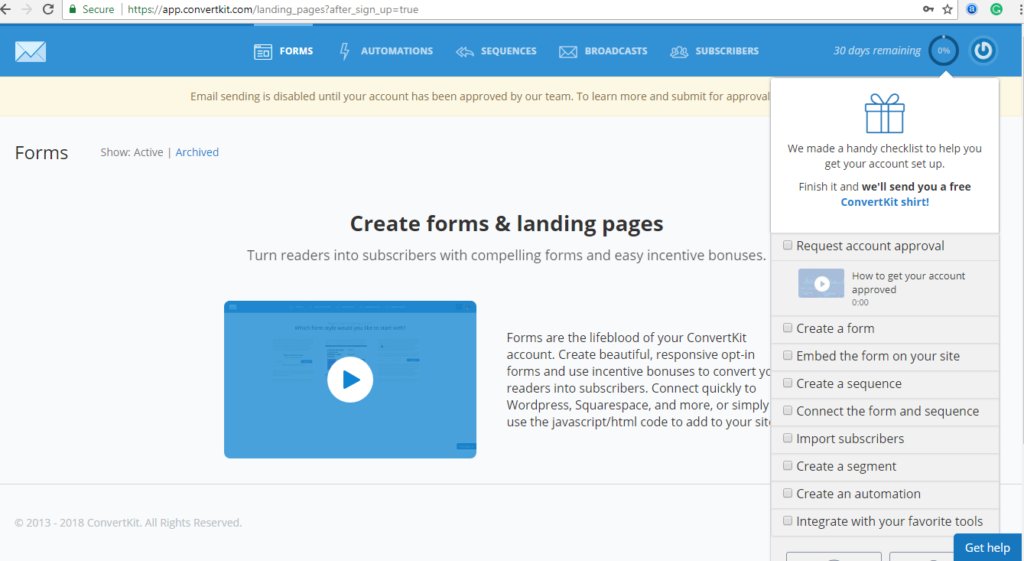
- Create a series of training videos to explain users how to use your product. Don’t forget to embed these videos throughout the product.
Metrics for success:
Glue your eyes on the Customer Effort Score, a measure of how much effort a user has to put in using your product.
6. Strive to respond to customer concerns in real-time
The team at Nozzle is very particular about timeliness when it comes to customer service.
“We respond to all customer service inquiries during business hours in real-time,”
Boyd Norwood
Both ticketing and solving customer problems in real-time come with their benefits. The former is a good solution for resolving major concerns, while the latter is helpful for responding to minor queries quickly.
Keeping this in mind, consider striking a smart balance between ticketing and responding to customers in real-time:
- Use live chat to resolve minor customer queries within a short time frame and solve bigger concerns over email.
- Train your entire customer support and social media team (since 55% of customers complain via social) in how to use your product so they can offer instant support.
- Employ customer engagement tools like video chat and co-browsing to improve communication between your support representatives and customers.
Did you know: Real-time assistance with co-browsing and video chat is the trending Customer Service Technology in 2024
Metrics for success:
Note Average Handle Time. It gives you an average time that a customer support representative takes in solving a customer issue, giving you an idea of how efficient your team is.

7. Give representatives the “freedom” to delight customers
Such a goal helps you stand out from your competitors. Why? Because excellent support improves your customers’ experience, helping retain them.
Proof: 86% of the consumers are happy to pay more for good customer experience.
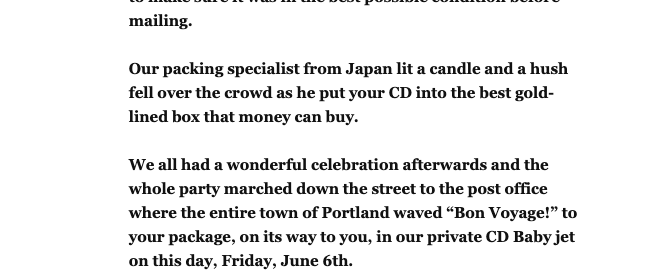
So what are some ways you can delight your customers? Webster from Authority Hackers shares their ways:
“One goal we recently implemented was a $50/month ‘Customer Delight’ budget. We set a goal to our support agents to ensure they spend at least $50 a month on creating a special or unique experience for our customers. They can use this in any way they like as long as it involves the customer. This can be simple things like ordering a pizza, sending personalized gifts or thank you notes and helping people out by purchasing a product or service they can use.”
Mark Webster
You can follow suit. On top of that, take these steps:
- Encourage your customer support team to come up with creative ways to delight your customers.
- Give customer service agents the freedom to make decisions to delight customers on the spot.
- Aim to solve not only the customer’s immediate problem but also related future concerns by educating your customer on how to proactively avoid the issue and offering learning resources.
Metricsfor success:
Track your customer’s satisfaction with the Customer Satisfaction Score (CSAT) and Net Promoter Score (NPS),which estimate the likelihood of your customers recommending you to their circle (always remember: delighted customers talk about you with their friends and family).
8. Create self-service resources for customers
Why? Because 67% of customers share they favor self-service over speaking to a support agent. In fact, 91% of them prefer getting their answers from an online knowledge base that’s tailored to their needs.
So the lesson here is simple: start documenting common customer queries and create content to answer them. The team at Nozzle does this on a regular basis.
“We document questions received each day and within two weeks, adds answers for each, where needed, to our knowledge base in the form of text and videos.”
Boyd Norwood
Here’s an example of self-help resources in action:
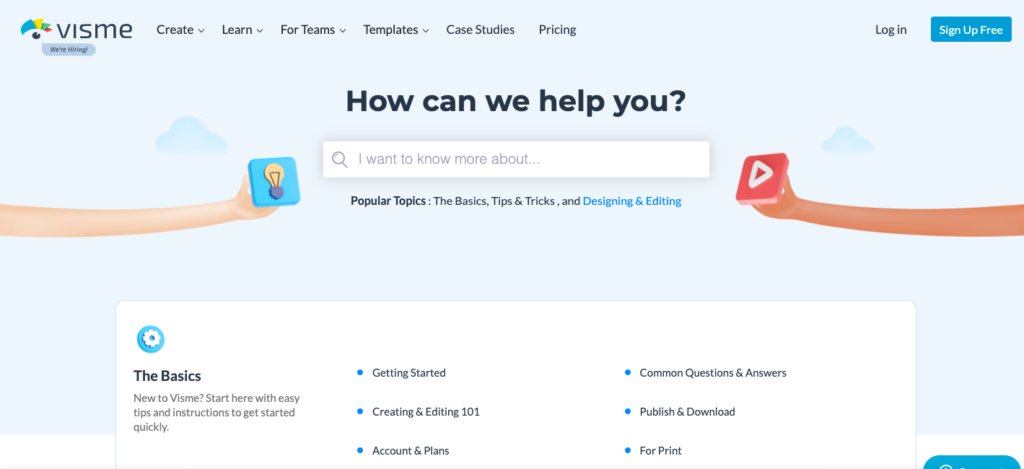
To go about uncovering common customer questions, ask your customer service team to:
- Conduct customer surveys and jump on calls with loyal customers to understand where they commonly have questions on using your product.
- Follow brand mentions and relevant hashtags to understand what your audience is complaining about.
Metrics for success:
Keep your eyes peeled on the Self-service Usage metric by tracking the use of self-help tools available to your customers.
9. Train your team to offer personal support
Nearly 80% of buyers confess they’re more likely to buy from a company that provides tailored customer experiences. Of course, this wouldn’t be possible without a friendly customer support team, which makes training your CS team a viable customer service goal.
Here are some steps to take right away:
Work on strengthening their customer service skills including empathy and patience.
- Train them in communicating clearly to avoid confusion or miscommunication.
- Teach them to identify common interests with customers they speak to so they can keep conversations friendly.
Metric for success:
Keep tabs on your Customer Experience Rating to understand how satisfied customers are with your service representatives’ help.
For details of each of the metrics discussed, dig into this useful customer service metrics guide.
Ready to set actionable goals for your team?
Here’s hoping this list of customer service goals has sparked some good ideas for making goals for your team.
Remember: draft specific, measurable, achievable, relevant, and time-bound goals. This way, your goals are going to be practical instead of unrealistic targets that everyone fails to meet.
FAQs on Setting Customer Service Goals
- What are SMART goals in customer service?
- Specific: Clearly define the ‘what’ of your goal, such as creating an FAQ section for customer education.
- Measurable: Set goals that can be tracked, like response time and resolution rates.
- Achievable: Ensure goals are realistic for your team to accomplish.
- Relevant: Align goals with customer service objectives to stay fresh and pertinent.
- Time-bound: Place a time cap on goals for effective tracking and team motivation.
- Why is customer happiness a crucial goal for businesses?
- Prioritizing customer happiness ensures positive support experiences.
- Satisfied customers are likely to repeat business and advocate for your brand.
- How can businesses improve response time to customer queries?
- Set a target response time based on industry standards and customer expectations.
- Use email filtering, automation, and templates to streamline responses.
- Track metrics like First Response Time and Average Resolution Time.
- What does it mean to improve the quality of customer service responses?
- Focus on accuracy, verification, and professional formatting in responses.
- Metrics for success include Average Resolution Rate and Number of Interactions per Case.
- Why is prioritizing response channels important in customer service?
- Prioritizing channels enhances response efficiency and quality.
- Track Preferred Communication Channel metrics to optimize support efforts.
- How can businesses reduce customer churn rate?
- Appreciate customers through shout-outs and personalized interactions.
- Keep in touch with customers through valuable content and incentives.
- Metrics for success include monitoring Customer Churn rates.
- Why is improving the customer onboarding process a vital goal?
- A smooth onboarding process ensures customers effectively use products or services.
- Monitor Customer Effort Score to gauge onboarding effectiveness.
- What is the significance of responding to customer concerns in real-time?
- Real-time responses enhance customer satisfaction and resolve minor issues promptly.
- Track Average Handle Time to measure efficiency in issue resolution.
- How can businesses create self-service resources for customers?
- Document common customer queries and create content for an online knowledge base.
- Track Self-service Usage to gauge the popularity and effectiveness of self-help tools.













